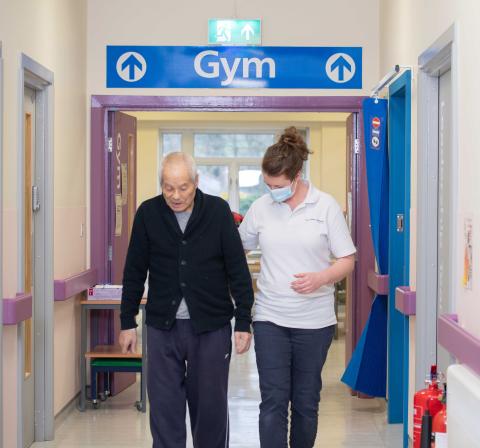Ambitious objectives in the NHS Long Term Plan will not be met without the workforce targets for physiotherapy staff across the system to enable delivery.

Despite a 42 per cent increase in the last decade of registered physiotherapists, this has not been matched by physiotherapy staffing levels in the NHS in England, with only a 20 per cent increase in the NHS in the ten years 2011-2021.
While there has been stronger growth among non-registered physiotherapy staff in the NHS, it has been marginal.
We found that NHS physiotherapy services have insufficient staffing, creating a vicious circle of poor morale and low staff retention.
While the NHS Long Term Plan includes aims for early intervention in primary care and rehabilitation in the community, these ambitious objectives have not been accompanied by workforce targets for physiotherapy staff across the system to enable delivery.
How to create capacity
Physiotherapy is a profession ready to grow
The continued growth of registered physiotherapists shows that the profession continues to be a popular choice for people who want to make a positive difference to the lives of others.
In the last five years there has been a 74 per cent increase in student intake. Health Education England has modelled future supply growth of 6-7 per cent each year till at least 2030.
Universities must keep up with demand and increase the number of training places available.
Ensure pro-rata distribution of growth goes into the NHS
There continues to be demand for physios across all sectors. Offering all physio graduates a band 5 NHS contract will ensure a healthy pipeline going into the NHS over the next 5 years.
The NHS must also create more jobs for physios in primary care and rehabilitation to improve management of long-term conditions and frailty in the community.
Investment in support workers
There is currently one non-registered physio support worker to every five registered physios with a growing consensus among physio managers that the proportion of support workers should increase to a ratio of 1:3.
In order to meet this, the government needs to invest in training opportunities and apprenticeships to create 6500 additional non-registered roles in the NHS within 5 years.
Improving NHS retention is essential
There are currently high vacancy rates in the NHS and a high proportion of physios leave to work in other areas within the first 5 years of their career. This highlights a real need to invest more in the current workforce in order to give physiotherapists a better career trajectory.
It must be made easier for them work across sectors, have portfolio careers and access to secondments and sabbaticals to gain experience and skills.
Increased training in personalised care and shared decision making is critical for the whole physiotherapy workforce.
What we want the future to look like
Our policy asks are:
- Grow registered physio numbers by at least 7 per cent per year to help bring our numbers closer to the international average within five years.
- Create 12,000 more registered physio roles in the NHS with the priority on out of hospital services in primary care, rehabilitation for people after discharge and management of long-term conditions and frailty in the community.
- Create 6,500 additional non-registered physio posts in the NHS within five years.
- Upskill physio staff to retain them and enable them to deliver change within the NHS.





































